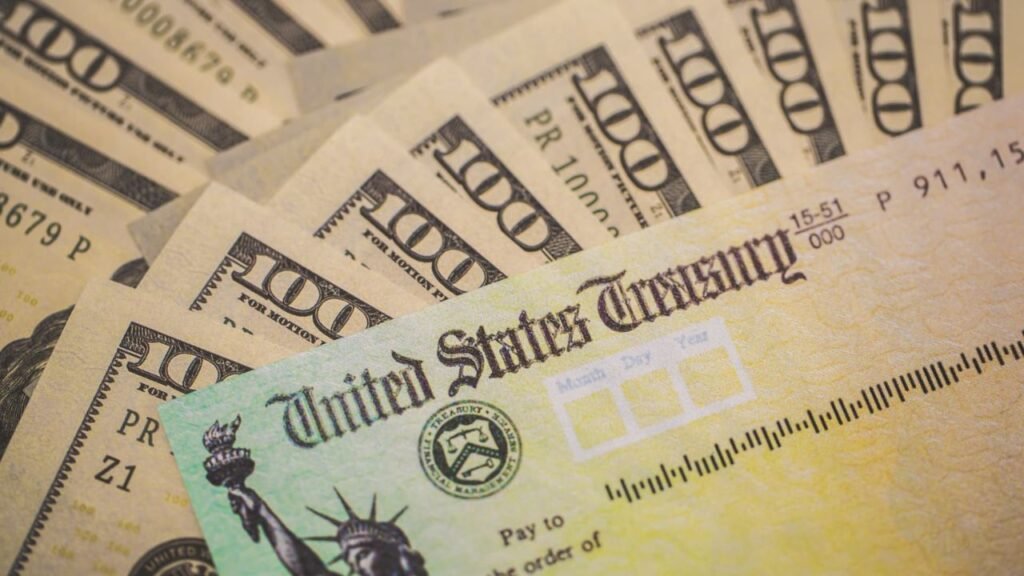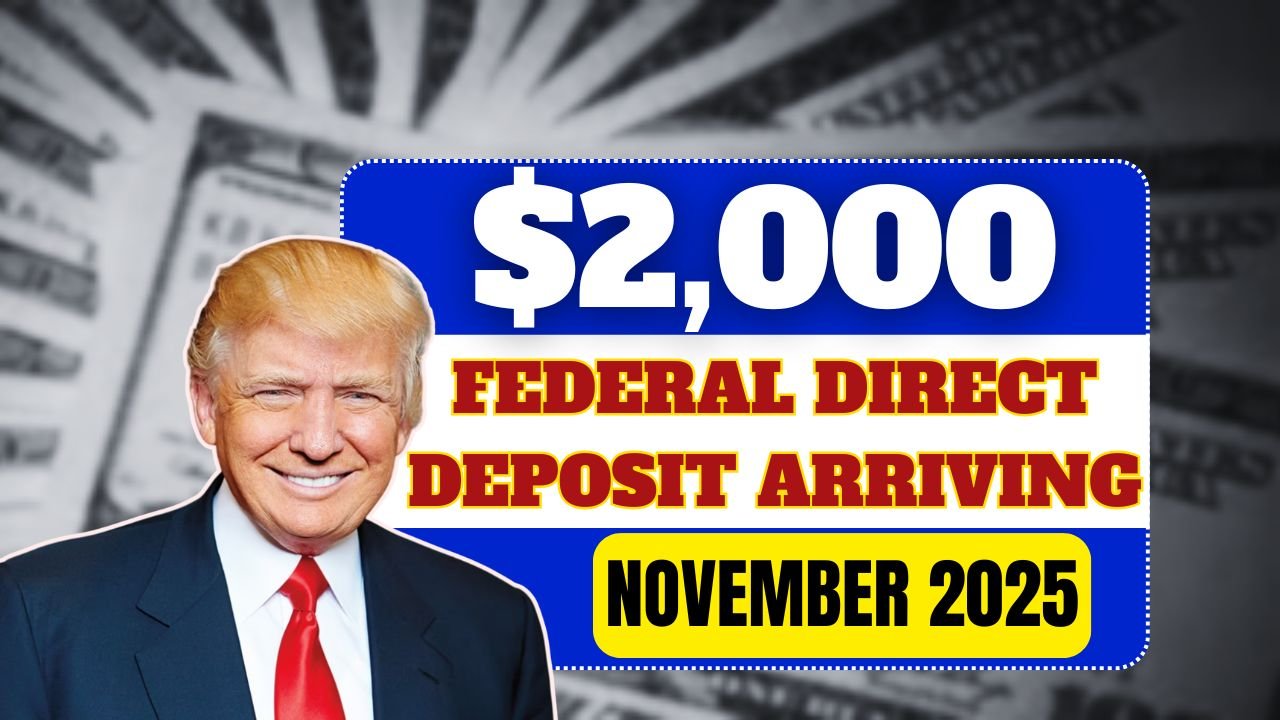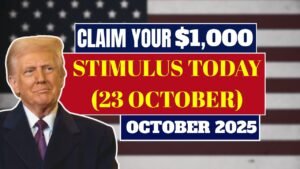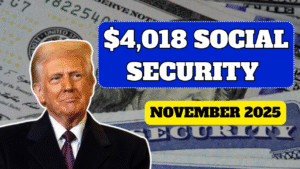$2,000 Federal Direct Deposit: By mid-October, the bank accounts of millions of Americans started to receive good news secretly—an amount of $2,000. It is not a “stimulus check” of the sort but nevertheless, it is impacting the populace in the same way. The U.S. Treasury Department and the Internal Revenue Service (IRS) have made an announcement stating that this payment is a part of a special federal relief plan which is to help the citizens who are suffering due to inflation. Before the turn of the year 2025, the government intends to be somewhat of a softener against the rising cost of living.
What’s the real reason behind this $2,000 payment
The “Federal Inflation Adjustment Initiative” is the reason for this payment being made, which is a relief plan that was sanctioned at the beginning of this year. The plan is focused on the least and the middle-income people who are suffering due to the rising prices of rent, healthcare, and basic goods most.
Importantly, no application is required for this payment. If you filed your 2024 tax return, the IRS already has all your information. The payment amount is determined automatically based on your income and tax filing status. The money will go to the same bank account where your previous tax refund was deposited.
According to the IRS’s distribution bulletin, direct deposits will begin November 15, 2025, and continue until November 25, while those without direct deposit will be paid via paper check or debit card.
Who is eligible and who is not
Eligibility for this relief payment is primarily based on income limits. As income increases, the payment amount decreases. The IRS calls this a “gradual phase-out formula”—meaning those closer to the upper end of the income limit will receive a partial payment.
| Filing Status | Full Payment Limit | Phase-Out Limit | Notes |
|---|---|---|---|
| Single | Up to $70,000 | $70,001 – $90,000 | Partial Payment Possible |
| Married (Joint) | Up to $150,000 | $150,001 – $190,000 | Partial payments possible |
| Head of Household | Up to $112,500 | $112,501 – $140,000 | Partial payments possible |
Eligibility requirements:
- Must have a valid Social Security Number (SSN).
- Must be a U.S. citizen or legal resident.
- Income must be within the above limits as of 2024 tax filing.
Those interested in checking their payment status can use two key tools available on the IRS website – the “Get My Payment” portal and the “Where’s My Refund” tracker. Both tools allow you to easily check the status; you just need to verify your identity.
If an individual doesn’t receive a payment by mid-November 2025, they can claim it as a “Recovery Rebate Credit” on their 2025 tax return, just as was done during the pandemic.
Why the government feels the need for this relief payment

Inflation has been a little less severe in comparison to last year, still the price pressure has not disappeared. The most recent data from the Federal Reserve shows that the costs of basic items like food, rent, and medical care have risen around 17 percent when compared to the time before the pandemic.
With this in mind, the government included this plan in the budget reconciliation package to provide individuals with a “bridge payment”—a temporary financial cushion until wages rise in line with inflation.
In the words of a Treasury spokesperson, “This is not a permanent solution, but a practical relief.”
To be honest, $2,000 cannot radically change anyone’s life. However, it will definitely help for a month. For most people, it is the money for rent, for others, it is the payment for two grocery bills; and for some, it is the amount to pay winter electricity and gas bills. For seniors, single fathers/mothers, and poor families, this money could really help, give them time to breathe—something they have not had for several years.
Its Impact on the Economy – Relief or Risk?
Economists are divided on this payment. Some believe that such cash assistance could increase inflationary pressures by boosting market demand. Supporters, meanwhile, say it’s not a major stimulus package, but rather a targeted relief that reaches only those who truly need it.
The analysis performed by the Federal Reserve indicates that core inflation that does not take into account energy and food prices) is still exceeding the 2% target. Energy prices, health insurance premiums, and rent hikes are all rising at a fast pace. Therefore, these relief payments can be viewed as a well-judged measure, offering a short-term respite to the families who are having financial difficulties.
More importantly, from an economic perspective, such payments instill confidence in the public. When pressures from inflation, interest rates, and political uncertainty have persisted for years, a good deposit in the bank account is a significant boost. A standard payment gives people a sense that the system is still paying attention.
What to do now – IRS recommendations
The IRS is urging citizens to double-check their bank statements as recorded on their 2024 tax returns. If someone changed their bank account this year, there’s no opportunity to update this time—the IRS will send the payment based on the old account in its system. If that account has been closed, you will receive a paper check.
Those receiving payments by check or debit card can expect it to arrive in early November 2025.
Whenever you have doubts regarding your eligibility, check the income limit table above or the IRS’s official tools. At the same time, be cautious about phishing emails and false messages. The IRS will always communicate through official channels, never asking you to click on a link or provide personal information via text/email.
Conclusion: Small Amount, But Big Relief
The two thousand dollars that have been granted as a relief might not be something that completely changes a person’s life but it is definitely a chance to let go of stress for a lot of people who are overloaded with the high costs of living. The payment is a tiny but significant message from the authorities that assistance is still available even in hard times,
During November the relief program will not only transfer money into people’s bank accounts but also persuade the public that, maybe, little by little, the situation is getting better.
FAQs
Q1. Who is eligible for the $2,000 federal payment?
Individuals earning up to $70,000, joint filers up to $150,000, and heads of household up to $112,500 qualify for full payment. Partial payments apply above these limits.
Q2. Do I need to apply to receive the $2,000 deposit?
No. If you filed your 2024 tax return, the IRS will automatically process your payment based on your income and filing status.
Q3. When will the payments be sent out?
Direct deposits began on November 15, 2025, and will continue through November 25, 2025. Paper checks will follow in early November.
Q4. How can I track my payment status?
You can use the “Get My Payment” or “Where’s My Refund” tools on IRS.gov to check the status of your payment.
Q5. What if I don’t receive my payment by mid-November?
If your payment doesn’t arrive, you can claim it later as a Recovery Rebate Credit on your 2025 tax return.


